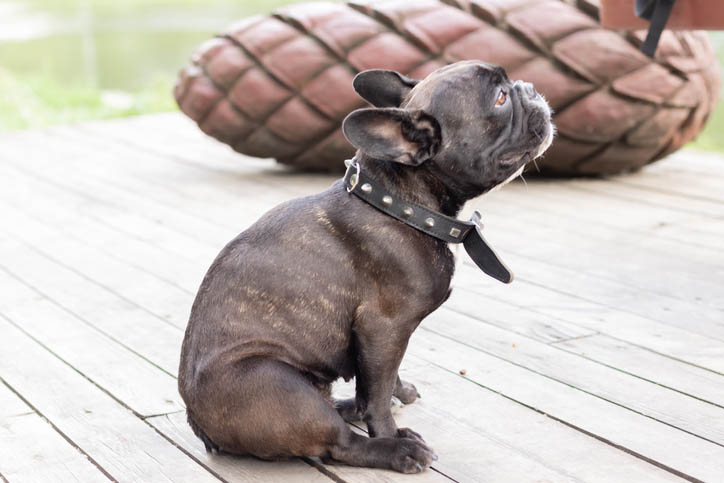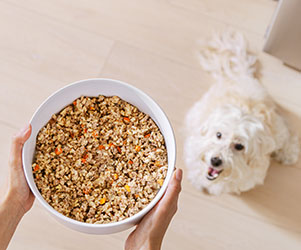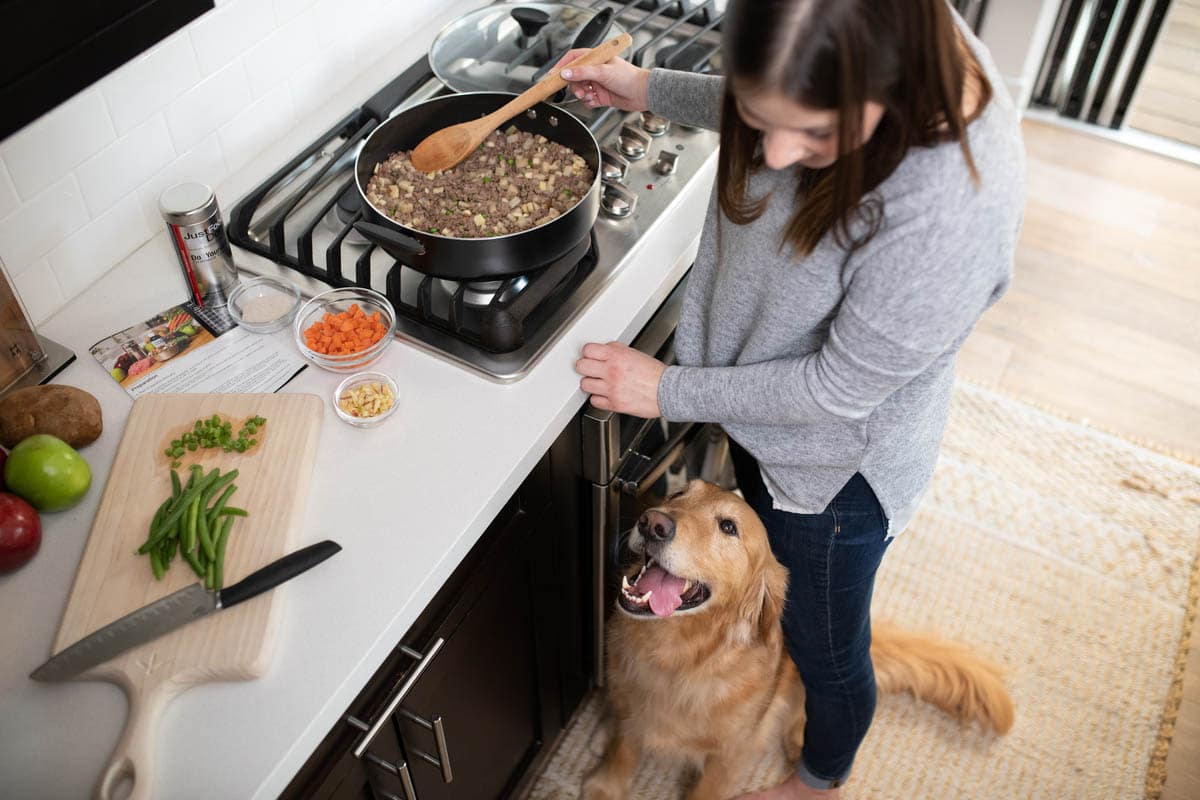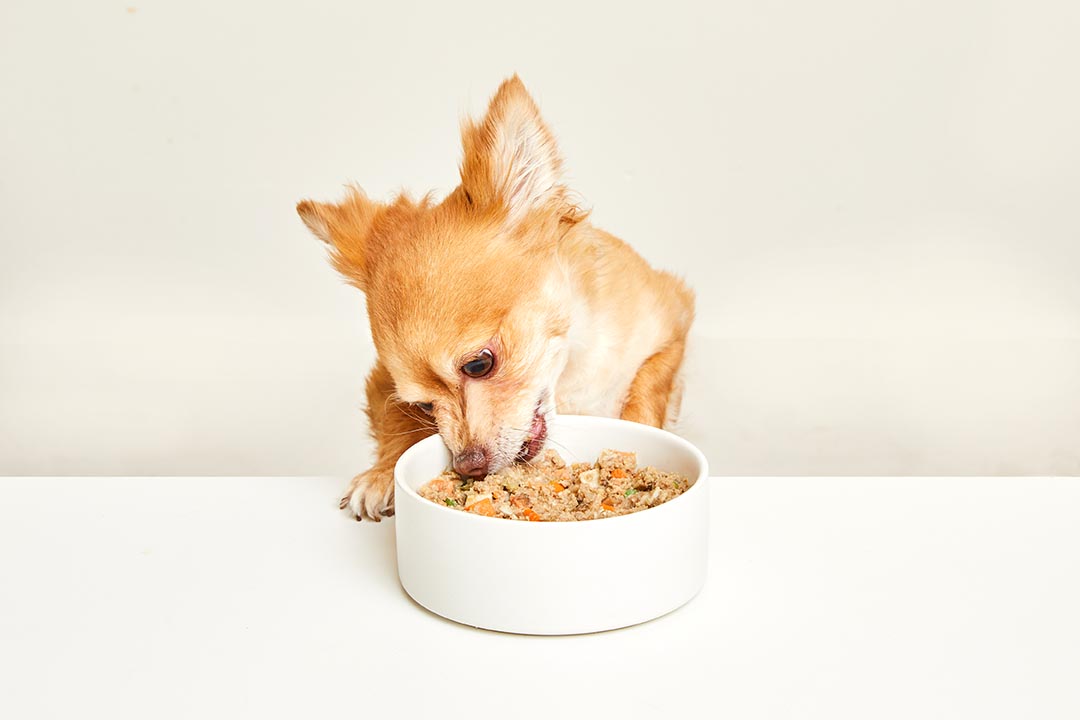8 Reasons Your Dog Is Scooting and What to Do About It
There are several reasons why your pet might scoot, ranging from gastrointestinal issues and food allergies to improper grooming and anal gland irritation.
There are several reasons why your pet might scoot, ranging from gastrointestinal issues and food allergies to improper grooming and anal gland irritation. No matter the cause, it’s important to narrow down how you can help whether it be veterinary intervention or home remedies for dog scooting.
We’ve probably all been there — cringing with embarrassment as our beloved, well-behaved dog decides to drag their rear end awkwardly across the carpet at the worst possible moment. Likely in front of others.
Do you roll your eyes? Change the topic? Laugh off your dog’s clownish behavior? However you react at the moment, it’s important to recognize that scooting, when excessive, is your dog’s way of signaling that something is amiss with their health.
Regardless of the cause, dogs prone to scooting need veterinary attention and perhaps a change in diet and nutrition. To help you navigate this tough topic, here’s some guidance from Dr. Jessica Wilson, DVM. She outlines everything you need to know about dog scooting and ways to help your dog feel better.
Scratching That Itch
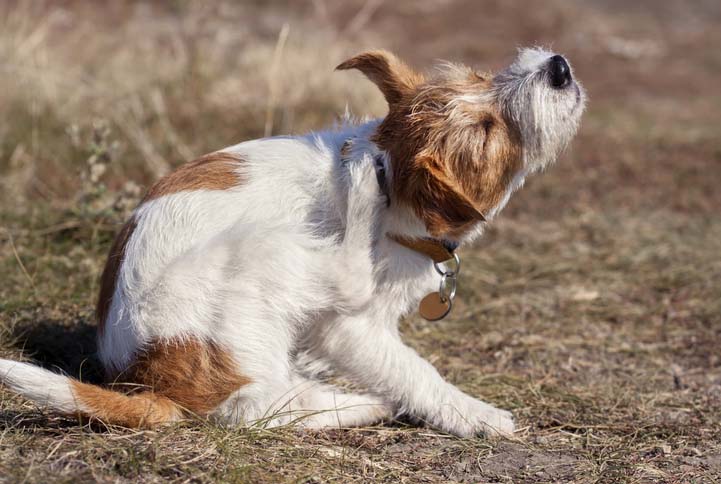
Why do dogs scoot? “Dogs exhibit signs of scooting as a way to ‘scratch’ themselves or alleviate irritation of their rear ends,” says Wilson. Scooting is more common among puppies than adult dogs. Small-breed dogs are often more commonly affected than large-breed dogs.
According to Wilson, your dog may scoot in combination with excessively licking his rear end or having the urge to have a bowel movement. “Scooting should not be ignored if it is a repeated occurrence,” she warns. “Sometimes the discomfort is so severe that they may stop to scoot during a walk, on grass, concrete, on the carpets at home, hardwood floors…anywhere they can find relief.”
It’s important to see your DVM to determine if there is an underlying cause of your dog’s excessive scooting.
8 REASONS WHY YOUR DOG IS SCOOTING
If you’ve ever wondered, “Why is my dog scooting so much?” below are the top reasons and conditions that cause this common canine behavior.
- Parasites
- Food allergies & gastrointestinal issues
- Seasonal allergies
- Injury
- Anal gland irritation
- Improper grooming
- Matted fur
- Bug bites
Let’s dive into how each of these common causes and how they can bring about scooting and anal gland problems.
1. Parasites
The source of your dog’s irritation and the scooting could be a parasite infestation, internal or external. “There are intestinal parasites like tapeworms that may shed their eggs via the anus, and there are also external parasites such as fleas and ticks that may bite or attach near or around the anus, causing irritation,” says Wilson. Parasite infections should be treated under the guide of a veterinarian.
2. Food Allergies and Gastrointestinal Issues
According to Wilson, dietary allergies can result “in generalized pruritus (itching), and certain parts of the body may be affected more than others.” Dogs that are scooting because of food allergies also show other symptoms, such as digestive system distress like constipation or diarrhea. The soft tissue around a dog’s anus can get inflamed due to diarrhea.
3. Seasonal allergies
You may see your dog start scooting to provide relief during certain seasons. “The challenge with dogs that have seasonal allergies is that most of the time, they are responding to environmental causes, which are nearly impossible for pet parents to control (e.g., pollen, grass, sometimes new fabric detergents, or cleaning products),” states Wilson.
4. Injury
Any injury to the rear end or abscess can cause an accumulation of debris or healing scar tissue, which then leads to scooting. “As wounds heal, they can become itchy, since scar tissue does not have the same elasticity as normal, healthy tissue,” says Wilson.
5. Anal gland infection or irritation
Your dog’s anal glands are small sacs with ducts that open on either side of the anus. These glands get filled up with secretions from sebaceous glands, which are later expressed when the dog does his business. The scent of the excretion acts as a marker for canine communication.
Dogs will sometimes start to scoot when the anal sacs get filled and aren’t expressed naturally. Wilson says scooting happens when these “sacs become inflamed, impacted, and infected.” Tumors of the anal sac can also cause scooting.
6. Grooming mishap
Is your dog is scooting after a grooming session? The groomer’s clippers or scissors may have injured the delicate skin around and on the anus. The resulting irritation may be the reason your dog is rubbing their behind on the rug for some much-needed respite.
7. Matted fur
Canines that have medium to long fur may be more prone to scooting since their coat can make it harder to ensure a clean rear. According to Wilson, your dog may experience irritation around the anus leading to scooting “if poop or matted fur is accumulated around the anus”.
8. Bug bites
In the summer months, bug bites around your dog’s bottom can cause itching and discomfort. Your dog might attempt to relieve the itching through licking, chewing, biting, or — you guessed it — scooting.
Examine the area
If you are a dog owner and notice your precious pet scooting excessively, take a look at the area to see if you spot signs of swelling, scabbing, leftover feces, or matted fur. If the area feels warm to the touch, that’s another indicator that something is wrong with your dog’s rear end.
“Aside from scooting, another habit to look out for is if your dog is giving their rear end constant attention, such as licking and biting,” suggests Wilson. “If scooting is evident, pet owners should call your veterinarian to make an appointment sooner rather than later, as some of the causes may be more serious than others and may require further investigation promptly,” she adds.
7 TREATMENTS AND EFFECTIVE HOME REMEDIES FOR DOG SCOOTING
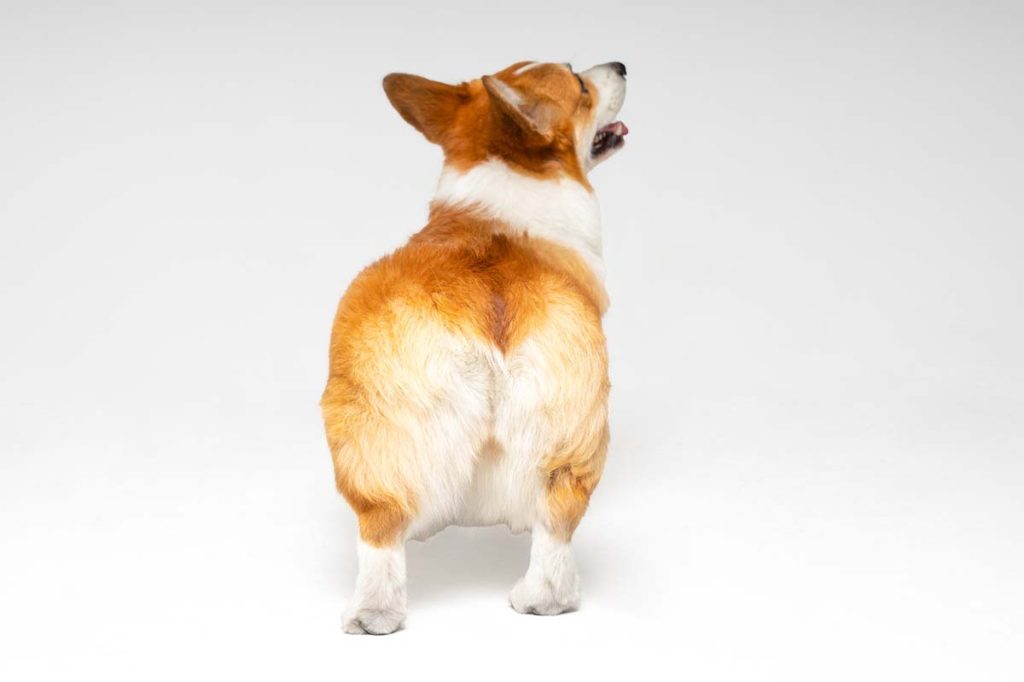
There’s no one-size-fits-all solution for scooting. Natural remedies may need to work in conjunction with medical intervention. But once you have worked with your veterinarian to identify the root cause, then you can determine the right course of action for relief.
1. Antibiotic/Antiparasitic Treatment
If parasites are the cause of your dog’s scooting, it’s important to get to the root of the issue. Ticks and fleas can irritate your dog’s bum from the outside. But fleas also carry tapeworm eggs. And when those eggs hatch inside your dog and tapeworm segments (which look like tiny rice grains) are excreted, they irritate the anal area, too.
The best way to avoid this icky situation is to keep your dog free of external and internal pests in the first place. “Antiparasitic treatments, such as flea and tick preventatives, are over-the-counter, and I highly recommend consulting with your veterinarian to find the right product for your dog,” says Wilson.
2. Dietary changes
If loose stools are what’s causing your dog’s scooting behavior, first figure out what triggered the gastrointestinal issue. If you’ve recently changed up your dog’s diet, that might be the culprit. Sudden dietary changes (whether you use kibble or fresh) can wreak havoc with your dog’s digestion. Wilson recommends using this diet transition guide to help prevent any stomach upset that can lead to diarrhea and scooting.
3. Supplements
If your dog’s scooting is seasonal or allergy-related, Wilson recommends supplements like Omega 3 fatty acids and immune system support from Skin & Allergy Care. Both can support a healthy inflammatory response and promote healthy skin. Probiotics may help get your pet’s gut health back on track. A little canned pumpkin may also help with both diarrhea and constipation.
4. Expressing anal glands
If your dog has clogged anal glands that are impacted or inflamed, consult your veterinarian for advice on treatment and frequency of anal gland expression. Wilson does not recommend getting your dog’s anal sacs expressed at the groomer unless there are symptoms of scooting. “With the expression of the anal sac, irritation can occur as there is manual pressure involved using the fingers.” It’s best to leave the task in the hand of trained veterinary health professionals.
5. Surgical debridement
If the anal sacs are impacted, the vet might sedate your dog to clear obstruction to the anal ducts. In the event of an open wound, drainage and surgical lavage (washing out the cavity) are needed. “If anal sac issues are continual, your veterinarian may recommend surgical removal of the glands. This is usually performed by a board-certified surgeon, as the procedure is quite delicate,” says Wilson.
6. Topical ointment
For skin irritation around the rectum, your veterinarian may prescribe topical ointment or spray that have antibiotic and anti-inflammatory properties. These can be used in addition to an Elizabethan collar (also known as an e-collar or “the cone of shame”). They prevent your dog from licking the medicine off. For anal glands issues or infections/wounds around the anus, Wilson suggests that “medications should only be used when prescribed by your veterinarian” to resolve the issue.
7. Warm compress
A warm compress for your dog’s butt is a good home remedy for anal sac issues or severe irritation to the perianal area. You can wet a cloth or paper towel with warm water. However, this is a temporary fix — much like scooting. So it’s important to find and address the root cause, as well.
Whatever caused diarrhea — whether it’s a new recipe you served up or something not-so-fresh your pooch fished out of the trash — Wilson suggests turning to JustFoodForDogs Balanced Remedy formulation to get your pet’s tummy back on track.
What to Food to Give a Scooting Dog with Diarrhea
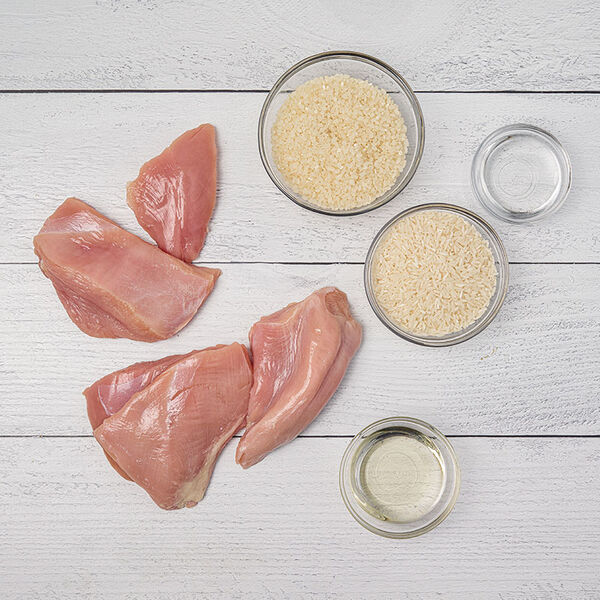
A highly digestible, low-fiber, and low-fat diet is one of the best home remedies for dog scooting affected by diarrhea. Since the most common reason for dog scooting is related to your dog’s bowel movements, you may want to take a look at how your dog’s food affects your dog’s poops.
The Balanced Remedy recipe features simple ingredients like ground turkey breast and sushi rice that are gentle on your dog’s digestive tract. Plus, it contains a proprietary nutrient blend to ensure your dog gets a complete and nutritionally balanced meal. With all of those ingredients that help support your dog’s gut from the inside, they may scoot less.
The next time you catch your furry friend doing the booty scoot on the rug, don’t succumb to shame. Instead, use the opportunity to seek out other signs of any underlying issues causing the behavior. Once the root cause is identified, you can relieve your dog’s discomfort with help from your veterinarian. They may suggest a change in your dog’s diet/supplements, and good hygiene/grooming. All in good dog health.
This content is for informational use only and does not replace professional nutrition and/or medical advice, diagnosis, or treatment. It is not a substitute for and should not be relied upon for specific nutrition and/or medical recommendations. Please talk with your veterinarian about any questions or concerns.
